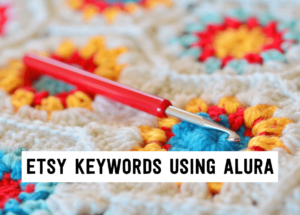
How to find the best Etsy keywords in 3 simple steps using Alura
If you want to be found in search results on Etsy, you need to optimize your product listing for SEO. And if you want to
join
About to start an online shop and wondering if people will pick up what you put down? Is this product idea a good one? Trusting your guts and following your heart is an important part of running a business and launching a unique and successful online shop. But diving head first without a bit of research is also a big mistake.
Here’s what to do instead.
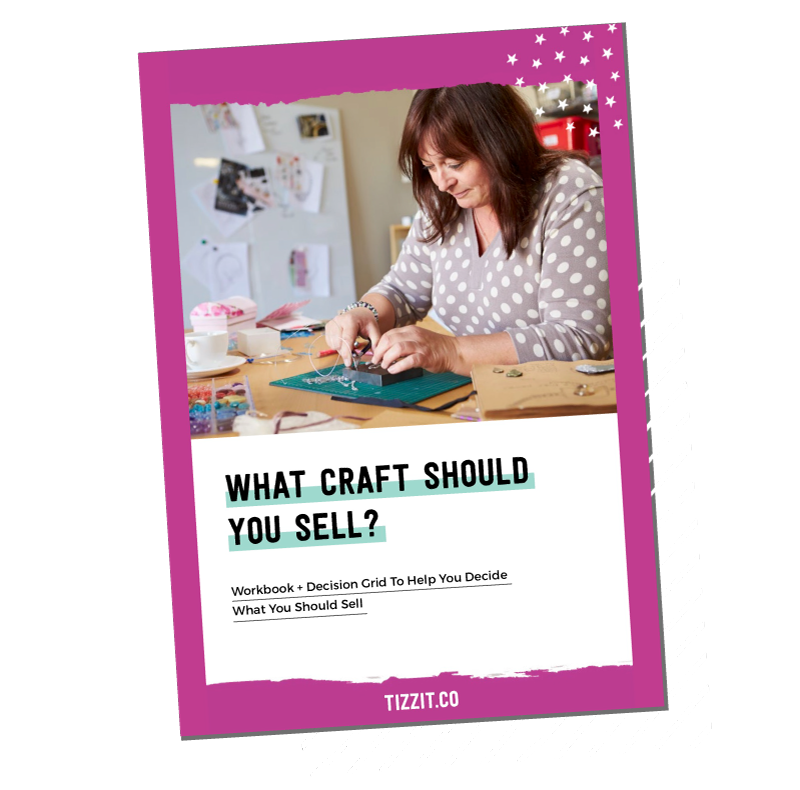
Grab this free workbook + decision grid!
This free workbook + decision grid will guide you through the decision process so you know exactly what handmade products you should sell.
This is the second (and last) part of the “How to know if your products will sell” series. In the first part, we took a look at the demand and the market to gauge whether your idea was marketable, and whether there seem to be people out there interested in buying your product.
In this part, we focus exclusively on your product and go through what is called a “product-based” evaluation.
Let’s dive in!
Understanding your ideal customer’s desires and pain points is fundamental. As a rule, people buy a product because
– they need or want to avoid a problem or a pain
– they need or want to gain pleasure from it.
It’s pretty simple really, but that’s how we all look at any decision we have to make in life. It’s just how the human brain works: will this give me satisfaction or pleasure? I want it. Will this solve this problem I have? I need it.
People buy products based on emotions and only then justify the purchase logically.
So, to figure out whether your product will sell or not you need to:
1 – have a clear idea of who your ideal customer is
2 – dig deep into their emotional triggers and see if your product fits any of these 2 categories: [solves problem] or [provides pleasure].
To give you 2 quick examples:
Love Bird Baby Nests is a great example of a product that solves a problem and addresses a specific pain point:
As they state on their website, the product solves a simple but stressful parenting problem: “The BabyNest was designed to make life easier for new parents and their babies! BabyNests can be used anywhere your baby is resting. Having their own Nest, will help them settle easier especially in new environments as they will quickly recognize the smell and feel of their nest.”
An example of a product that provides gain or pleasure could be this insanely cute and fun fake fire camp and marshmallow sticks by Nixilauroo:
This product doesn’t really solve a problem: I think we agree that your kids don’t NEED this firecamp set, neither do you. They would be just fine without it. And you would still be a great parent without it. But you totally want to see your toddler playing with it, am I right? It’s because it’s fun, playful and totally adorable! In other words, it “provides a gain or pleasure”, so we’re sold! That’s the kind of feeling you’re looking for for your potential customers.
Related: How to define your perfect ideal customer profile so you can dig deep into their emotional triggers and understand what makes them click “buy now”. Includes a free workbook!
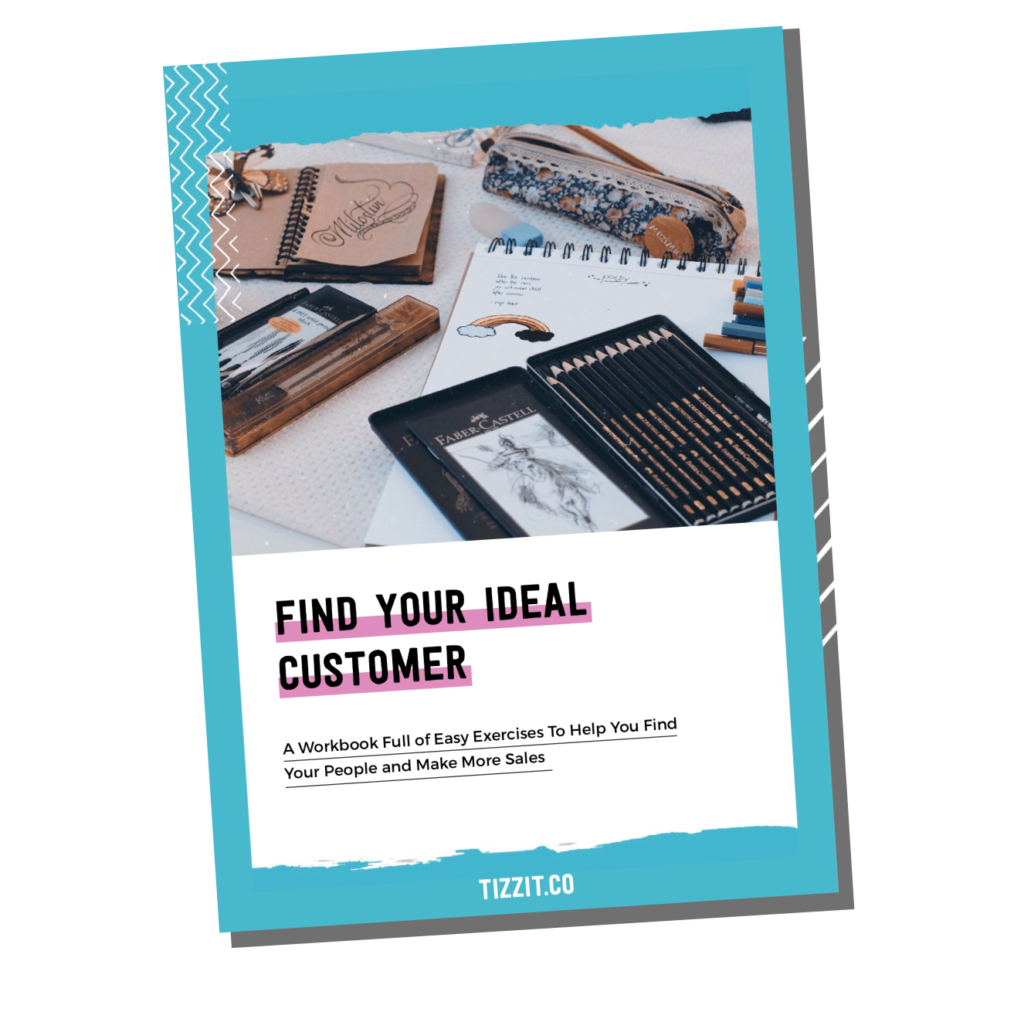
Grab this free ideal customer workbook
This free ideal customer workbook, made specifically for handmade shop owners, will help you find and attract your ideal customers, so you can make more sales!
It sounds a bit silly but it’s important to consider the logistics for a minute. How big and heavy is the product you’re thinking of making and selling?
It doesn’t have to be a red flag, but remember that this will add greatly to your shipping costs and could turn a lot of people off and go instead with a local shop option if the product is also available locally.
Having repeat customers for your online shop is a great way to build a strong brand and a successful shop. This is because selling to existing customers is easier than selling to new ones.
Products that are consumable are great for that (eg.: skincare) as you can easily set up subscription boxes and send a new package to your customers on a monthly or quarterly basis.
A great example is the Handmade Beauty Box:
Again, not a red flag if you can’t set up a subscription-based service for your product. But it’s a definite plus if you can!
Doing a bit of maths before launching your store could save you costly mistakes and help validate your product idea by making sure it is actually profitable.
So before you get started, make sure that you have you get your pricing strategy right. Don’t forget to include in your costs calculations:
– your materials costs
– your labor/work costs
– your overhead (= recurring costs not directly related to labor or materials but necessary to run your business: studio rent, insurance, software and tools, etc.)
Because your fixed costs for each item sold (shipping, payment processing fees, packaging, etc.) don’t scale with your product price, low price points products also tend to have a much smaller profit margin.
In part 1 of this series, when we took a look at the trends on google searches for our example “bow tie” this is what we got:
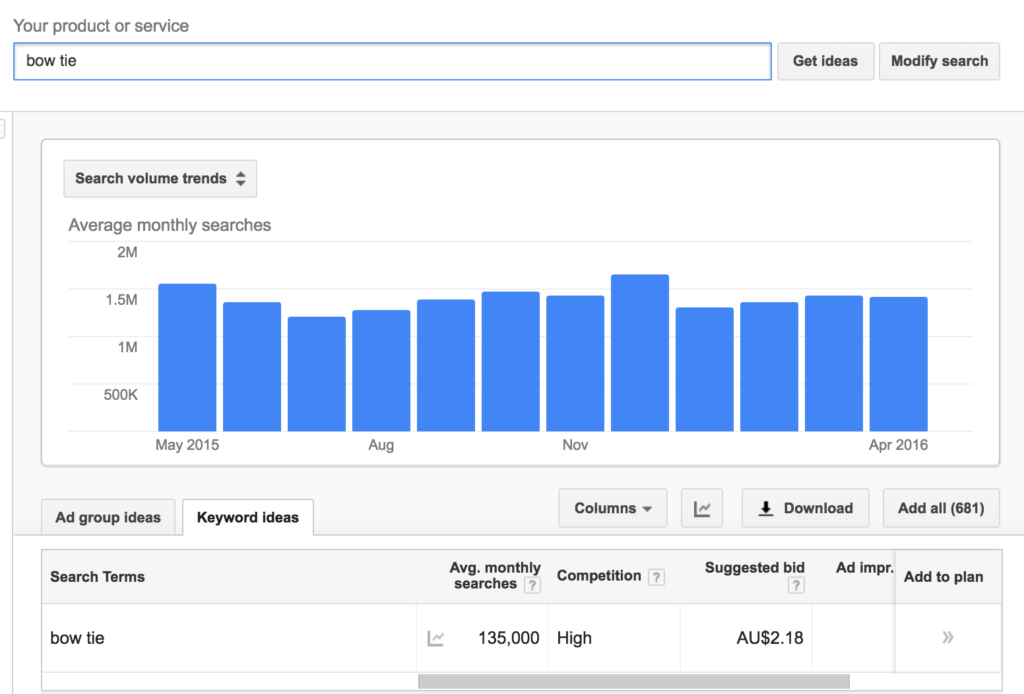
Anything else you can notice on that chart? The product seems to be very seasonal. In this case, every year around Christmas the searches on google for ‘bow tie’ peak up. Worth noting though is that even though the searches peak up around Christmas, they are still reasonably high the rest of the year. Which is a good sign. Try to look for “Christmas tree” on Google trends instead and you will see that outside of the Christmas period, there is almost zero searches on Google for that keyword. Not good.
So pay attention to the seasonability of your product. Again, this isn’t always a red flag but something that you need to take into consideration as it will affect your cash flow and the way you organize your stock and marketing calendar.
Making and selling your handmade products and launching your own creative shop is very different from crafting as a hobby. If you want to start an online shop to sell your handmade products, you have to make and sell things that are reproducible. This is crucial in knowing exactly what your costs are and getting your pricing right.
You also need to be able to scale your production if the demand for the product increases greatly without a disproportionate increase in labor and materials costs.
If you plan on shipping internationally, you have to make sure that your product will not run into trouble with any of the overseas regulations.
This is especially true if you sell cosmetics and skincare, products made with local plants, herbs, wood, food and perishables, etc.
In Australia for example: “All imported timber, wooden articles, bamboo and related products must comply” with the department’s Import’s Conditions. Meaning that if you plan on selling handmade wooden jewelry boxes… you first have to make sure it’s ok to do so and send them through mail or they might end up confiscated when going through customs 🙁
I hope you found this article useful! Don’t forget to also read Part 1 of the series on how to validate your creative product idea and figure out if your product will sell and to download your free workbook. Both parts go hand in hand and are equally important! And as always, if you have any questions, ask me in the comments!
you might also like…
related articles

If you want to be found in search results on Etsy, you need to optimize your product listing for SEO. And if you want to
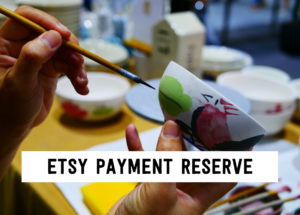
There has been a lot of talk in the Etsy community — and I mean A LOT of talk — about Etsy’s payment account reserve
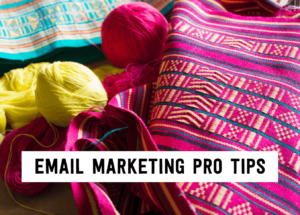
Anyone who knows me knows that I am a HUGE advocate for using email marketing to grow and scale your handmade business. But you may
Sign up below and get instant access to a collection of FREE practical guides, workbooks, and checklists that will help you start, grow and profit from your handmade shop. (without pulling your hair out!).
disclaimer
subscribe to youtube
become a member
get in touch
We acknowledge and give thanks to the Budawang and Yuin people, the Traditional Owners of the land we work and live on. We pay our respects to all Aboriginal and Torres Strait Islander Peoples and elders past, present and emerging.
4-step Maker’s Roadmap System
Library of In-Depth Courses and Training
Live Monthly Coaching Sessions
A Supportive Online Community
close
We hate spam too. Unsubscribe at any time.
close
We hate spam too. Unsubscribe at any time.
close
We hate spam too. Unsubscribe at any time.

DOWNLOAD THIS FREE WORKBOOK + DECISION GRID

find your ideal customers with this free workbook